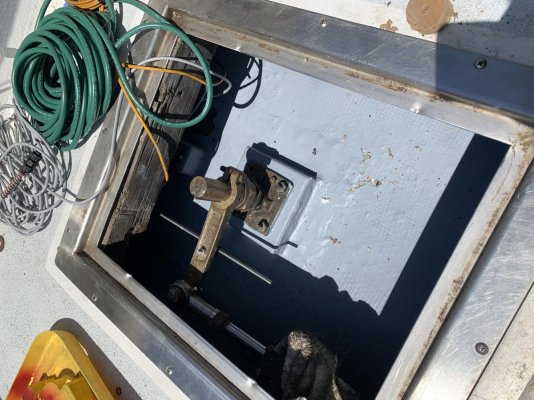Alisske
Senior Member
I have to admit, after some research, I came across this material a few years back when re-doing the rudder table on my boat. The rudder table sits in water a lot on my boat due to the design. Any wood table/backer plate for the steering stuffing box would get destroyed pretty quick. So I found this material and have used it now for every backing plate in the boat. (Thruhulls, prop shaft stuffing box, strut, keel bolts etc…..)
Simply put, the stuff is indestructible. (Its also a monster to cut.). I tried my table saw, and it cut well, but it was just abusive to the saw. (I apologized to my beloved table saw after such horrible actions, lol) now a-days a wet tile saw does the trick.
I just wanted to share because I am really a pessimist about material durability on boats since its such a harsh environment and this stuff has passed my expectations. . (I’m a teak, fiberglass, bronze type of guy).
Simply put, the stuff is indestructible. (Its also a monster to cut.). I tried my table saw, and it cut well, but it was just abusive to the saw. (I apologized to my beloved table saw after such horrible actions, lol) now a-days a wet tile saw does the trick.
I just wanted to share because I am really a pessimist about material durability on boats since its such a harsh environment and this stuff has passed my expectations. . (I’m a teak, fiberglass, bronze type of guy).
Last edited:

